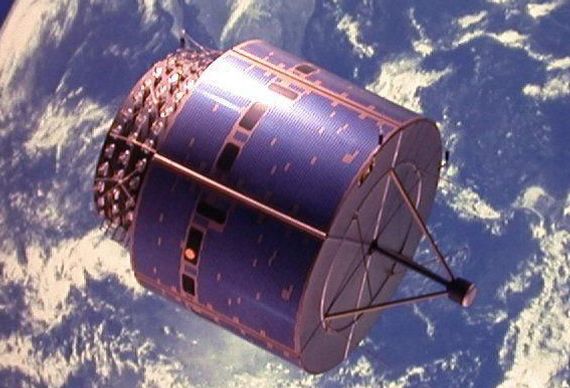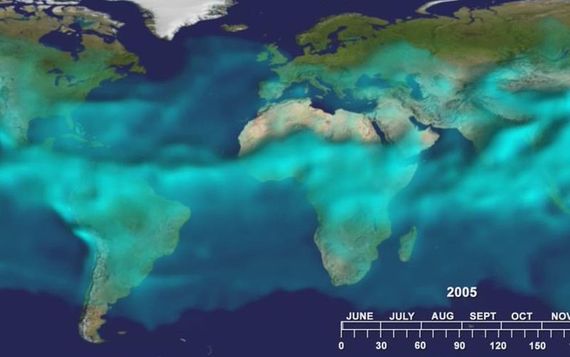The deployment of 5G is already underway. Many in the technology sector are proclaiming that this new mobile network will revolutionise different aspects of our lives, from surgeries in the operating room to sporting events to our home environment. But the arrival of a new neighbour into the community that currently inhabits the radio spectrum is not always problem-free. It’s time for all the stakeholders to get together and update the rules of coexistence.
In this case, alarm bells went off among the meteorologists, who are now warning that some of the frequencies at which the new 5G networks operate are quite close to an already occupied spot (23.8 gigahertz) which satellites use to gather valuable measurements used in weather forecasting. This could lead to interference from mobile phones and other equipment that invalidate these data and, consequently, the forecasts, the meteorologists caution. The latest auction for the open 5G band in the US, a country struggling to take the lead in the development of the new network, has not helped to allay their fears. As Nature magazine pointed out at the end of April, some of the frequencies in the allocation phase are very close to the one already mentioned used by meteorological satellites.
The World Meteorological Organization (WMO) has just adopted a resolution that highlights the need to find global agreements to protect the radio frequencies used by meteorologists. In particular, it expresses “serious concern” about the threats to these bands due to the development of other radio communication services that share the spectrum. “Jeopardizing these frequencies jeopardizes weather forecasts and warning services and, thus, people’s lives,” says a note from the agency.

How to avoid interference between different systems will be discussed at the next world radio frequency conference of the International Telecommunication Union (ITU), which will be held next October in Sharm el Sheikh (Egypt). The arrival of 5G will also be discussed. “The consequences for weather forecasts will depend on the methods established there,” WMO sources explain to OpenMind. “If adverse criteria are chosen, the impact of 5G will be gradual and will worsen as it is deployed,” they add.
The need to find agreement
José Antonio Fernández, director of Production and Infrastructure at the State Meteorological Agency (AEMET) of Spain, explains that the 23.8 gigahertz frequency is where satellite sensors can detect the water vapour content at a specific point in the atmosphere. “These data are fundamental for numerical prediction models that allow us to make weather forecasts,” he explains. The expert adds that these measurements can’t be taken elsewhere in the spectrum. “The frequency at which the water vapour molecules vibrate is that. We can’t change it,” he says.
The problem, Fernandez continues, is that sometimes the signal emitted at a specific frequency can stray and invade nearby bands. This circumstance can be avoided if the emission is sufficiently dampened before it can interfere, which means establishing certain technical parameters to avoid this happening, he adds. The question, then, according to the WMO, is not to prevent the allocation of any of the frequencies allocated to 5G, but rather that all the actors involved in the deployment of the new network take into account the scientific observations of meteorologists and establish the appropriate measures to protect their operations.
But there is no unanimity on this point. As Nature magazine advanced, the European Commission considers it necessary, in order to avoid problems, to require a certain minimum damping of the signal (which is calculated in decibels), and the WMO is even stricter. On the other hand, the authority responsible for regulating the radio spectrum in the US established a more flexible criterion in the last auction.

What happens in one country also affects others, because the collection of data needed to make predictions through satellites is done on a global scale, Fernandez points out. This issue, he says, is a cause for concern in the sector. “If we are measuring badly what is happening today in the US, the forecasts five or six days out will be even worse.”
The radio spectrum, a “scarce and valuable” resource
Federico Ruiz, head of Spain’s 5G Observatory, explains that “the radio spectrum is a scarce and valuable resource”, which means that “all its users cling to it.” For this reason, he affirms that, “when any new neighbour arrives on the scene, as in the case of 5G, there is always the possibility that for some time interference will be generated, until the rules of coexistence are established.” This debate about the fit between new technology and weather forecasting instruments does not seem like an anomaly to him. “This is the day-to-day management of the spectrum,” he maintains.
In his opinion, it is necessary to “de-dramatize” the issue, because he is convinced that, if the case arises, “a solution will be found” both for this issue and “possibly many others, which we don’t know about yet and which may appear.” His position, he says, is not “to underestimate any problem of spectrum management.” But he dismisses doomsday scenarios. “We’re not going to run out of weather forecasts, of course,” he asserts.
For his part, Fernandez recalls that advances in telecommunications “are also very useful for meteorology.” As an example, he gives the fact that 5G can boost the development of the Internet of Things, which would allow meteorologists to “receive thousands of pieces of data” from elements such as cars and mobiles, usable when making forecasts. In his opinion, the important thing now is to recognise at the October congress common conditions for how the new mobile network will fit, and to make sure these conditions are met. In this way, he says, “we can all manage to live together.”
Comments on this publication